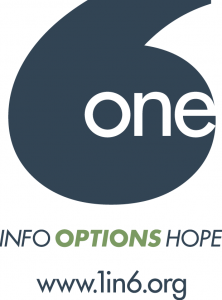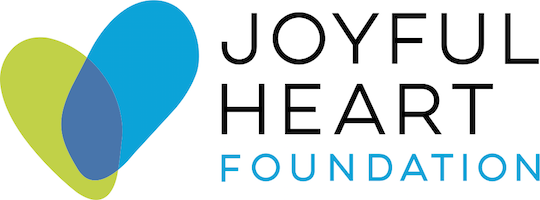You can leave this site quickly.
Learn more about Internet safety.
What Is a “Macho” Man?
Emiliano Diaz de Leon discusses cultural gender norms, their negative correlation to sexual violence and the challenges they impose on males surviving childhood sexual abuse. In response, de Leon explores the power of choice, positive masculinity and the joy of redefining “machismo” for his own family.
Machismo—the mere utterance of this word stirs up an array of emotions. For some, it evokes great male pride, and for others, it reeks of negativity and abuse. Growing up, I associated the word with one thing: wrestling. My favorite wrestler was Randy “Macho Man” Savage and after watching Macho Man’s signature moves on TV, I would emulate them during matches with my younger brother and step-dad, proving that I too could be “macho.” At the time, this word “macho,” seemed to epitomize what I and so many other boys growing up imagine they should be—a fighter that is cool, powerful, strong and in control. After all, these characteristics were not only being portrayed by my favorite wrestler, but they were also being acted out right in front of me by some of the males in my own family and community. Like most boys, I was being conditioned to be a macho man, but what does that mean? What is a “macho” man?
Many studies have been conducted to answer this very question, but a wide range of conflicting responses still exist. For every connotation of the word “macho,” there seems to be a philosophical debate. The literal definition, however, is difficult to refute. In simple terms, the word “macho” means one thing—“male.” The phrase “macho man,” therefore, is actually somewhat redundant because to be macho merely means to be a male.
The clash over machismo occurs when people begin to equate being male with being that socially-idealized man. Boys learn how to be a man from television, music, movies, literature and most importantly from the other men in their lives. As they get older, however, each man must decide for himself what kind of man he is going to be.
Will he embrace and express his feelings of sadness, fear and vulnerability or will he find ways to distance himself from these feelings?
Will the desire to numb himself with drugs and alcohol come before his family or will he find strength in spending time with them?
Will he give in to societal pressure, staying silent or participating with friends to make racist, sexist, or homophobic jokes or will he seek to be understanding of those who are different from him?
Will he support other young men’s decisions to ignore, deny or pass off their own feelings by bullying a partner or less powerful acquaintance or will he serve as a positive role model, openly expressing a full range of emotions, challenging traditional stereotypes?
In every man’s journey of self-discovery, he must arrive at his own individual answers to these questions and so many more like them. For boys who are subjected to physical, emotional, or sexual abuse, the ideal of manhood poses a particular challenge. Surely “Macho Man” would never let himself be victimized. He would never allow himself to feel the shame that inevitably follows. Because of thoughts like these, it is especially difficult for a boy struggling with the aftermath of unwanted or abusive experiences to figure out what it means to be a man. How does he fit in to a picture of manhood that can be so distorted?
One way is to create a personal definition of manhood by embracing the idea of being macho—of being a male—without all the preconceived notions about what a man should or should not be. Something that is much easier said than done.
As a son, brother, friend, husband and now father, I am still growing and learning about what it is to be a “macho” man, but my picture is becoming clearer thanks in large part to my three-year old son. As I approach the idea of manhood through his eyes, the scope of my own lens is widened past the wrestling and poor father figures to include an array of possibilities. His pure, unadulterated and open-minded view of the world is panoramic, and what I hope to get back one day. Because of him, I also realize that there can never really be one answer to the titular question of what it means to be a “macho” man. It is our experiences, attitudes and realizations that shape and re-shape our understanding of manhood.
Every man is responsible for painting his own picture of what kind of man he wants to be, and if enough men paint with respect and real courage, then perhaps, “machismo” will come to include a grand masterpiece of tolerance and nonviolence that encourages men to freely show their vulnerabilities and to begin to heal from their childhood injuries.
For more help with your own journey of healing from male childhood sexual abuse, please consider visiting www.1in6.org.
 - By Emiliano Diaz de Leon
- By Emiliano Diaz de Leon
Emiliano C. Diaz de Leon is a Cultural Capacity Specialist for 1in6. Besides his work with 1in6, Emiliano has more than a decade of experience working for multiple domestic and sexual violence centers in Texas. Since 2008, Emiliano has worked as a Primary Prevention Specialist for the Texas Association Against Sexual Assault (TAASA) and since October 2011 providing technical assistance to the Office on Violence Against Women (OVW) Engaging Men Program grantees around the country as a Men’s Engagement Specialist.
The mission of 1in6 is to help men who have had unwanted or abusive sexual experiences in childhood live healthier, happier lives.
1in6′s mission also includes serving family members, friends and partners by providing information and support resources on the web and in the community.
Joyful Heart and 1in6 invite you to visit 1in6.org for info, options and hope, and to learn more about our partnership and Engaging Men initiative at men.joyfulheartfoundation.org.
The views expressed above are not necessarily those of the Joyful Heart Foundation or 1in6.




Your Voices